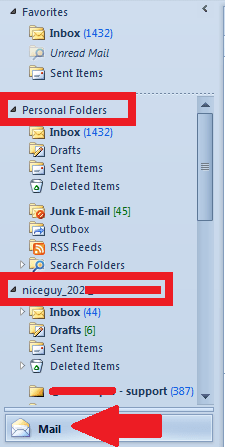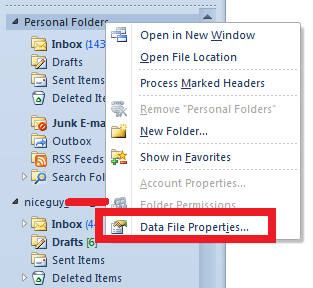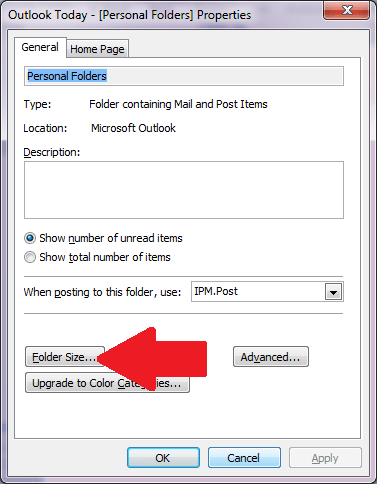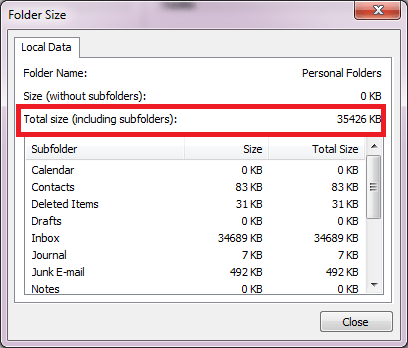If you are using the well know and widely used email program – MS Outlook 2010 or the latest version, you might be enjoying its whole bunch of features. Indeed the product has evolved so much over the years. However, you need to monitor the size of your mailboxes so that they don’t get bloated over time. This is especially true if you have email accounts set up as POP or POP3.

In MS Outlook, you have the option to add several email accounts. These email accounts also have the option to store their emails in a central repository or mailbox, or in separate mailboxes.
It is highly recommended that you store your emails in their corresponding email account mailbox for the following reasons:
- It is a way to organize your emails
- It will prevent bloating a central mailbox. That is, if you have several email accounts and all emails are stored in a single mailbox, this mailbox will bloat immediately causing problems with data corruption or integrity
- Migrating, or moving your emails from one computer to another will be easier if the emails are stored in their respective mailboxes
To check and monitor the sizes of your mailboxes in MS Outlook, here are the steps:
Step 1: Open MS Outlook and then click on the Mail button in the lower left panel. This will allow MS Outlook to show your Mailboxes in the left panel.
Step 2: Locate your email accounts listed in the left panel. If you have several email account in your MS Outlook, these accounts will be listed separately in the left panel. The account names are normally the email address itself unless you selected a different name. Also, when you click on the small right arrow icon before the email account name, or double click on the email account name in the list, it shall display all the associated email folders in the mailbox like Inbox, Drafts, Sent items, etc.

Step 3: Now, right click on any of the mailbox in the list. The mailboxes are those that shows their own email folders like Inbox, Drafts, etc. In the image above, the mailboxes there are called “Personal Folders” and the second is named after an email account represented by the mailbox.
Step 4: After you right click on the mailbox name, click on “Data File Properties“

Step 5: In a new dialog box that opens, click on the Folder Size… button.

Step 6: In the next dialog box that opens, you shall see the actual size of the mailbox and the sizes of its email folders.

Now, after knowing the actual size of your mailboxes, you can now decide if you need to remove or delete old emails to maintain a reasonable size of mailboxes and email folders.
